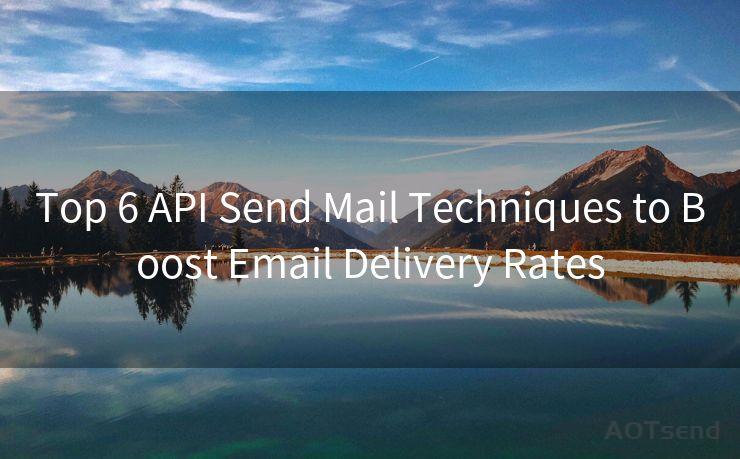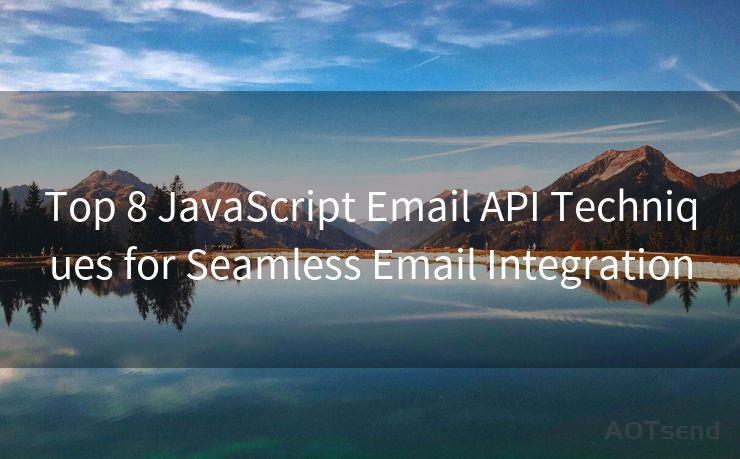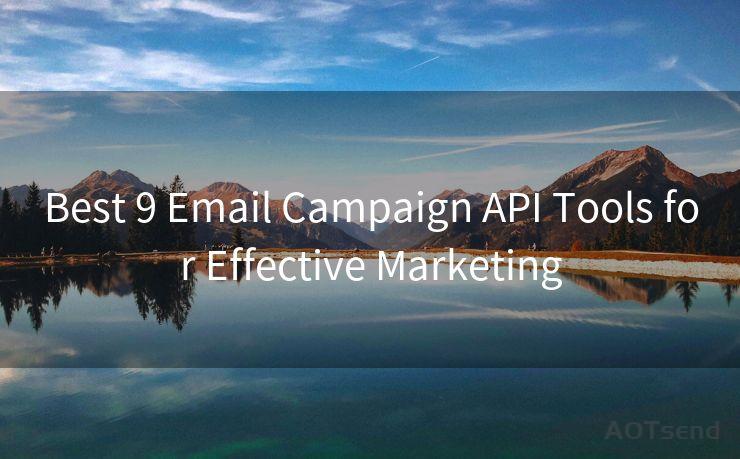19 Microsoft 365 Email API Best Practices
Hello everyone, I’m Kent, the website admin. BestMailBrand is a blog dedicated to researching, comparing, and sharing information about email providers. Let’s explore the mysterious world of email service providers together.




1. Introduction
When integrating with Microsoft 365 Email API, it's crucial to follow best practices to ensure efficient and secure communication. In this article, we'll explore 19 essential best practices that will help you make the most of the API and avoid common pitfalls.
2. Understand the API Limits
Before diving into development, familiarize yourself with the API's rate limits, quotas, and throttling policies. This knowledge helps you design your application to avoid hitting these limits and ensures smooth operation.
3. Use OAuth 2.0 for Authentication
For secure authentication, utilize OAuth 2.0. This protocol allows your application to access Microsoft 365 services without storing user credentials, enhancing security and compliance.
4. Implement Error Handling
Prepare your code to handle errors gracefully. The Microsoft 365 Email API returns specific error codes and messages that your application should interpret and respond to appropriately.
5. Optimize Data Retrieval
When fetching email data, use the API's filtering and sorting capabilities to minimize the amount of data retrieved. This not only speeds up the process but also reduces unnecessary network traffic.

6. Utilize Delta Queries
Delta queries allow your application to efficiently synchronize changes to email data. By using delta tokens, you can retrieve only the changes since your last synchronization, saving bandwidth and processing time.
7. Handle Large Attachments Wisely
When dealing with emails with large attachments, consider using the API's ability to retrieve attachment metadata without downloading the entire file. This approach conserves resources and improves performance.
8. Implement Paging for Large Result Sets
If your query returns a large number of results, use paging to retrieve them in smaller batches. This prevents memory overflow and ensures a smoother user experience.
9. Monitor and Log API Usage
Regularly monitor your API usage to identify patterns and potential issues. Logging API calls and responses can help with troubleshooting and optimizing your integration.
10. Keep Up with API Updates
Microsoft continuously updates its APIs. Stay informed about these updates by subscribing to the official Microsoft 365 developer blog and documentation updates.
11. Securely Store Access Tokens
Protect your OAuth access tokens by storing them securely. Use industry-standard practices like encryption and secure storage solutions.
12. Test in a Sandbox Environment
Before deploying to production, thoroughly test your integration in a sandbox environment. This helps identify and resolve potential issues without affecting live data.
13. Follow Naming Conventions
Adhere to Microsoft's naming conventions when creating folders, labels, or other entities through the API. This ensures compatibility and reduces confusion.
14. Use the Right API Version
Always use the latest stable version of the Microsoft 365 Email API for the best performance and feature set.
15. Implement Retry Logic
Network issues or temporary service outages can interrupt API calls. Implement robust retry logic to handle such scenarios gracefully.
16. Respect User Privacy
When handling user data, always adhere to privacy regulations and best practices. Only collect and store the necessary information, and ensure secure transmission and storage.
17. Optimize for Performance
Optimize your code and queries for performance. Avoid unnecessary API calls, reduce payload sizes, and utilize caching when possible.
18. Document Your Integration
Maintain detailed documentation about your integration process, including API endpoints, data flows, and error handling procedures. This aids in troubleshooting and onboarding new team members.
19. Stay Engaged with the Community
Participate in the Microsoft 365 developer community to stay updated on best practices, share experiences, and seek help when needed.
By following these best practices, you can ensure a smooth and efficient integration with the Microsoft 365 Email API, providing a better experience for your users and reducing potential issues.




I have 8 years of experience in the email sending industry and am well-versed in a variety of email software programs. Thank you for reading my website. Please feel free to contact me for any business inquiries.
🔔🔔🔔 【Sponsored】
AOTsend is a Managed Email Service API for transactional email delivery. 99% Delivery, 98% Inbox Rate.
Start for Free. Get Your Free Quotas. Pay As You Go. $0.28 per 1000 Emails.
You might be interested in:
Why did we start the AOTsend project, Brand Story?
What is a Managed Email API, How it Works?
Best 24+ Email Marketing Service (Price, Pros&Cons Comparison)
Best 25+ Email Marketing Platforms (Authority,Keywords&Traffic Comparison)
Scan the QR code to access on your mobile device.
Copyright notice: This article is published by AotSend. Reproduction requires attribution.
Article Link:https://www.bestmailbrand.com/post5662.html











